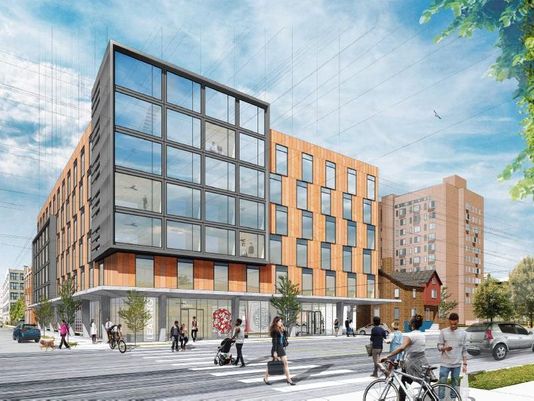I chose the article, “$32M apartment development coming to Midtown” by Jennifer Chambers of the Detroit News. The article briefly expounds upon the implications of the development on the Detroit area. The development consists of 84 apartments to the Sugar Hill Historic District at the corner of John R and Garfield, across from the John D. Dingell Veterans Affairs Medical Center. The development is to be designed by architect Phil Freelon, who designed the National Museum of African-American history and culture in Washington, D.C., the National Center for Civil Rights in Atlanta, and the Museum of the African Diaspora in San Francisco. “Located on nearly one acre of vacant space, the project will also include 7,000 square feet of commercial space, a nearly 300-space parking garage for residents, and public and green alleyways.”
I first heard about this development project when we went on our awesome tour to the Detroit Riverfront Conservancy. They discussed with us the positive and negative effects this would have on community development and the resurgence of the city. Last year, I took a class that outlined the history of Durham and its current revitalization stage that has displaced residents and disproportionately affected black populations. Because of this prior analysis and exploration of city development, I was initially very doubtful of the thought of such as project that would negatively affect a specific group and benefit only one group of people. However, the article delves into the lengths the City of Detroit and Detroiters are going to make sure this project is as equitable and beneficial to all as possible. I found a great example of this in the collaboration with native Detroiters to ensure that this project benefits the city’s residents and not only non-Detroiters. Freelon is teaming up with Detroit architect Michael Poris, of McIntosh Poris Associates. Poris is known for his work in preserving and revitalizing historic buildings such as the Park Shelton, the former Detroit Fire Department Headquarters and the Garden and Madison Theatre buildings. The project is making sure to confront the issue of segregated housing by income that many metropolitan areas struggle with. The article states that, “25% of the apartments will be set aside as affordable housing for those making between 50 to 80 percent of the area median income.”
In conclusion, although we can go to great lengths to make a situation as ideal as possible, things can go wrong. Thus, it is our duty as responsible citizens to continuously examine the short-term and long-term implications of things like development or investment projects in our immediate communities.
Link to article: https://www.detroitnews.com/story/news/local/detroit-city/2017/06/09/sugar-hill-development/102666808/

 RSS Feed
RSS Feed
